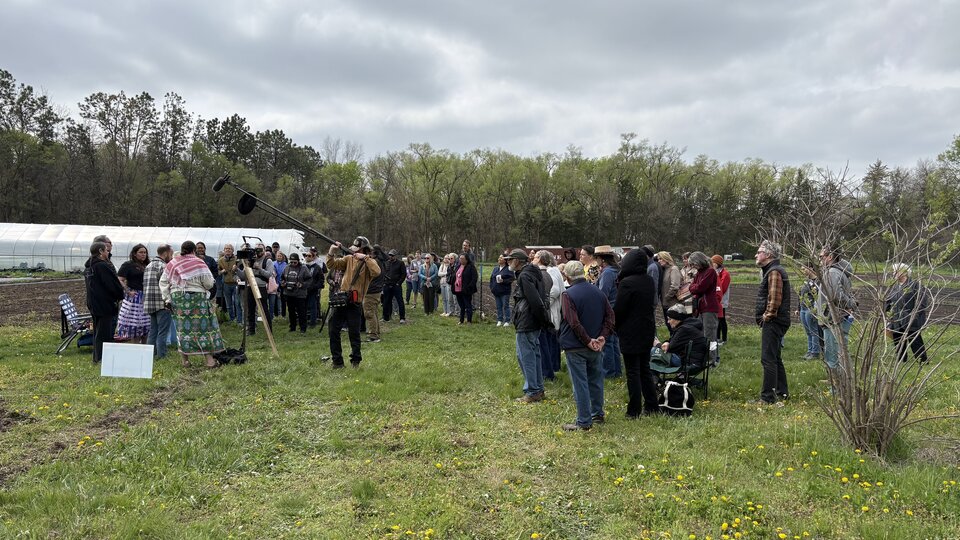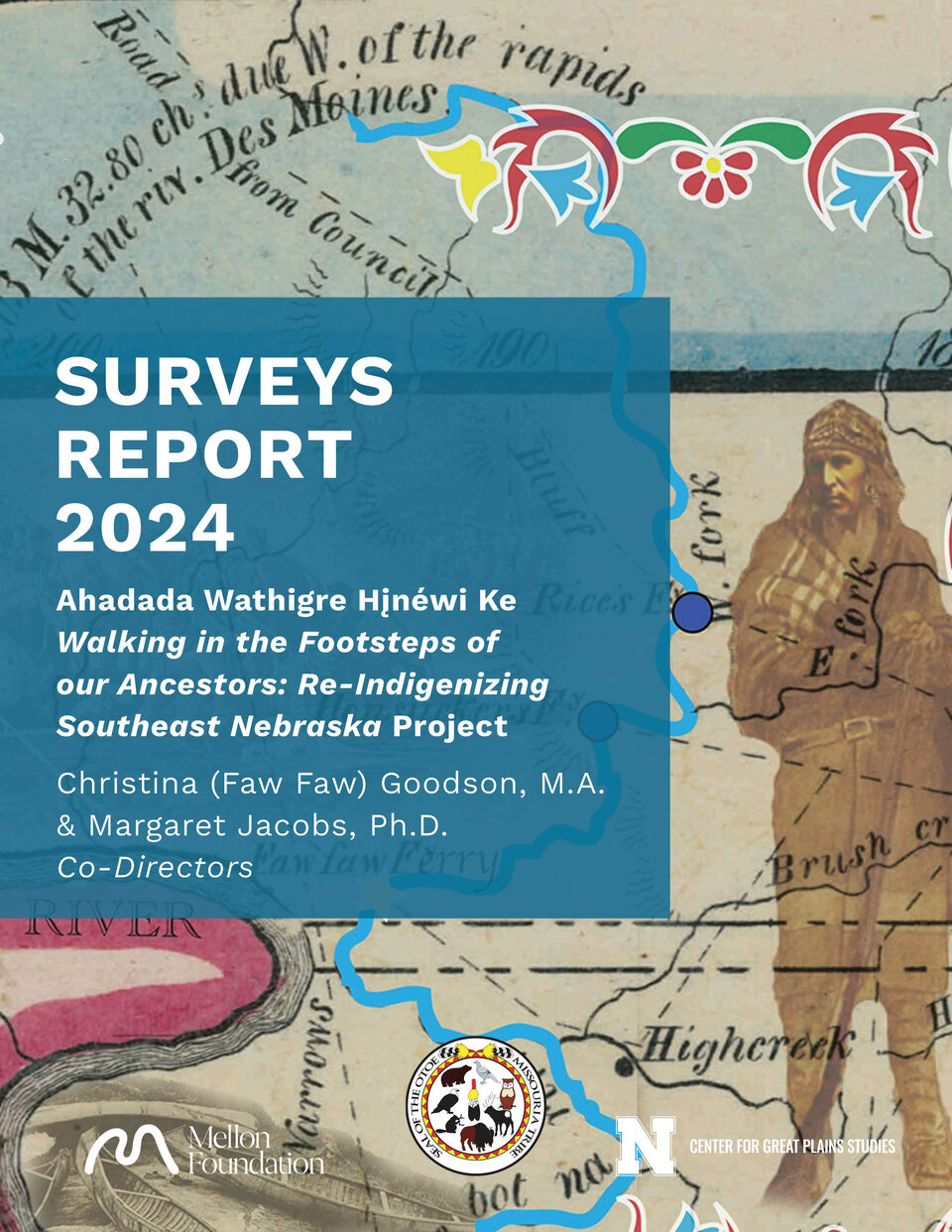
Results of our Surveys
The Otoe-Missouria Community Survey’s purpose was to gain insight into what the Otoe-Missouria people think about healing and reconciliation, their knowledge about Nebraska and the tribe’s removal, and what future efforts in Nebraska should look like. The results of this survey will be used to help represent the goals and values of Otoe-Missouria people as the project develops over the next few years and beyond. Annual surveys of tribal members are planned.
The Southeast Nebraska Indigenous Awareness and Engagement Survey wanted to learn what southeast Nebraska residents already knew about Indigenous history in the region, particularly that of the Otoe-Missouria Tribe. The survey was also designed to determine whether southeast Nebraska residents would support efforts to reconnect the Otoe-Missouria to their homeland and engage in healing and reconciliation. A second survey is planned for 2026, the final year of the grant, to determine if knowledge of the Otoe-Missouria and support for reconciliation activities has changed because of the Project’s efforts. The survey results will also help the Project plan future activities.
Key convergences between the two surveys
1. There is a need for education for both southeast Nebraska residents Otoe-Missouria tribal members about the history of the tribe in southeast Nebraska.
2. Respondents on both surveys thought that it was important to provide more education about Indigenous cultures primarily to preserve and respect Indigenous traditions, foster inclusivity and diversity, and address historical injustices.
3. Both southeast Nebraska residents Otoe-Missouria tribal members were most interested in taking part in cultural events or workshops as a form of reconciliation.
Otoe-Missouria Community Survey
Key Findings
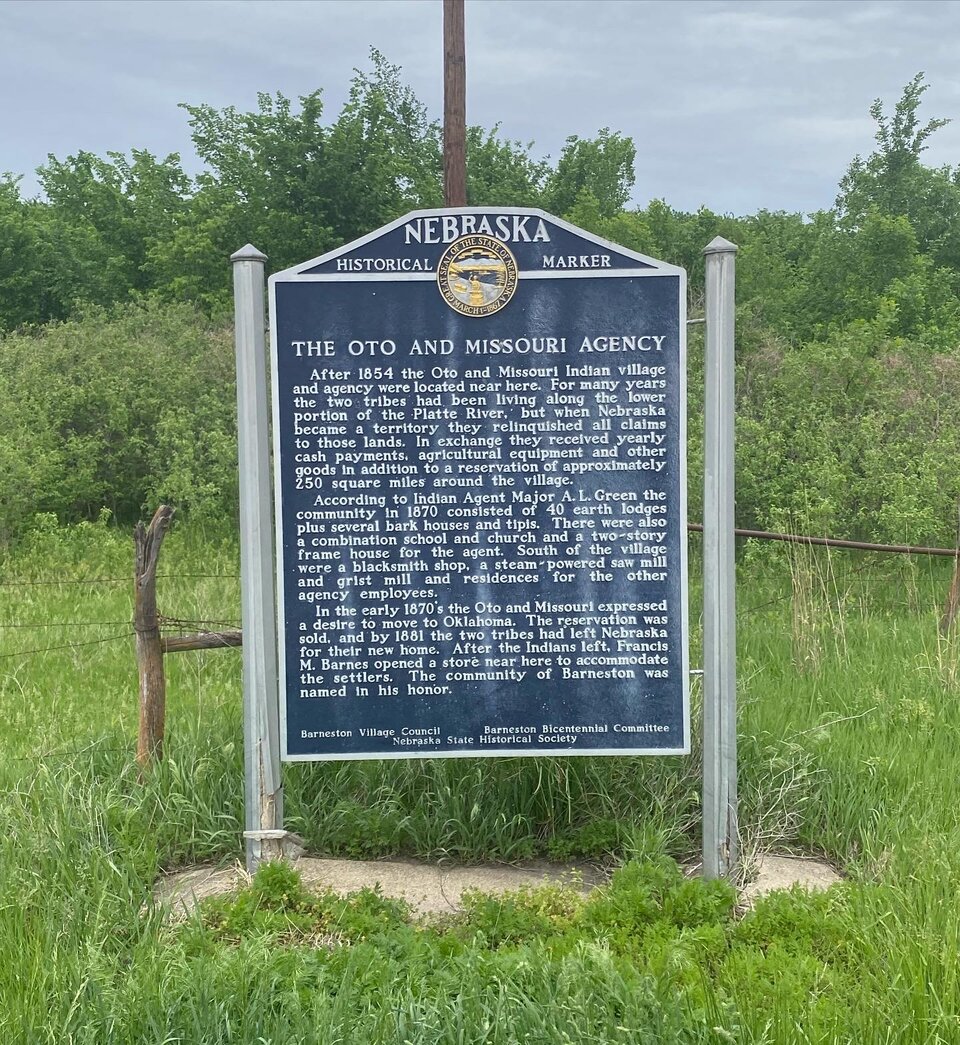
Learning About Nebraska History
1. 27% of respondents indicated they had seen physical acknowledgements (e.g., statues, historical markers) of Otoe-Missouria people and history in Nebraska. In a follow-up question about representation and emotions, comments mentioned feeling good and proud because the Otoe-Missouria were represented in some minor way. Other comments pointed out that many of the sites, signs, and artifacts reflected a settler colonial narrative that doesn’t provide an Otoe-Missouria voice.
2. 19% of responses indicated they were not at all familiar with the tribe’s historical presence in Nebraska.
3. When asked if Indigenous peoples are represented sufficiently in commemorations (e.g., festivals, land acknowledgements, historical anniversaries) in southeast Nebraska, the responses were almost evenly split between agree, neutral, and disagree.

Interest in Reconnecting to Homelands
4. It was overwhelmingly important for respondents for the Otoe-Missouria Tribe to have a more active presence in our homelands. While it was also very important for Otoe-Missourians to promote and sustain positive relationships with both settler and Indigenous communities in Nebraska, there was a slightly higher importance placed on connecting with Indigenous communities in Nebraska.

Future Directions
5. When asked what the best ways to develop a more active presence in Nebraska, most respondents indicated that the best options were continuing to work with Lincoln Parks and Rec, Nebraska Game and Parks, and the National Park Service to update interpretive signage and hold events with Otoe-Missouria people, including the annual celebration of Otoe-Missouria Day in Lincoln on September 21. Respondents also expressed strong interest in creating a sister city relationship between a town in Nebraska and Red Rock.
6. When asked which activities or initiatives the local community in Nebraska could undertake to better connect non-Otoe-Missouria people with Otoe-Missourians, respondents rated cultural events or festivals, collaborations with local indigenous organizations, and formal and informal education events as the best options.
7. When asked what they would like to see if the Otoe-Missouria regained land in Nebraska, most wanted to see it used for holding traditional ceremonies, establishing youth culture and language camps, and growing traditional food and medicine.
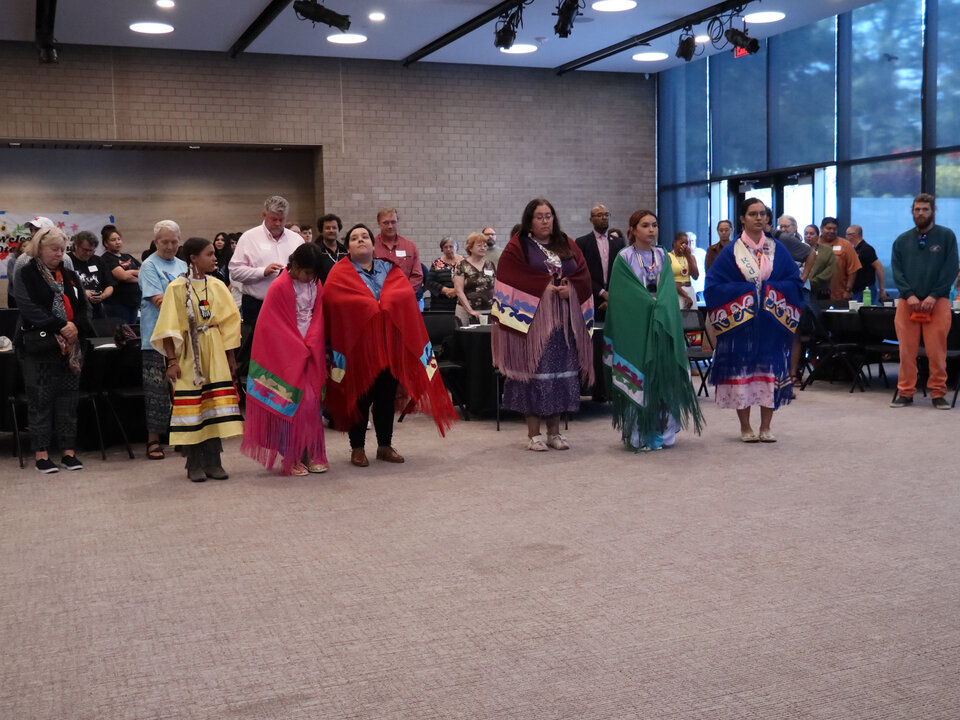
Recommendations:
- Additional education is needed in the Otoe-Missouria Community about the tribe’s ties to Nebraska
- The Project should continue its focus on “Changing the Narrative” of interpretive signage in community spaces in southeast Nebraska
- The Project should continue to celebrate Otoe-Missouria Day with special emphasis on strengthening ties between the Otoe-Missouria and resident tribes in Nebraska, especially the Omaha and Ho-Chunk.
- The next iteration of this community survey should ask Otoe-Missouria community members to review various examples of current commemorations in Nebraska.
- The Project should consider more educational events and cultural festivals in southeast Nebraska to reconnect the Otoe-Missouria to our homelands
Southeast Nebraska Indigenous Awareness and Engagement Survey
Key Findings
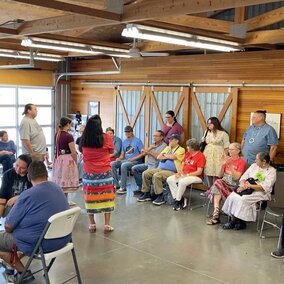
Learning About Nebraska History
1. A large majority - nearly 80% - of southeast Nebraskans have little or no familiarity with the history, culture, and art of local Indigenous peoples.
2. When asked to name two or three tribal nations from southeast Nebraska, 215 respondents answered, noting the Pawnee (116), Omaha (98), and Ponca (94) tribes. Only 58 respondents mentioned the Otoe-Missouria, although the tribe was the primary occupant of the land since at least the 1700s.
3. Museums were the most important source of information about Indigenous peoples in the region.
4. Southeast Nebraska’s schools are falling short in educating children about the Otoe-Missouria and other Indigenous peoples of the area. A majority of respondents (61.8%) said their schools had provided little to no knowledge about Indigenous peoples in southeast Nebraska. Of those respondents with children, 49.6% reported that their children had been exposed to little or nothing about Indigenous people.
5. Non-Native people in southeast Nebraska rarely interact with Native people. Nearly 61% of respondents never interacted with Native people at work and 82.3% of respondents said that they or their children never interacted with Indigenous people in school environments.
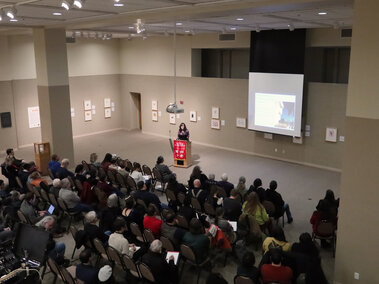
Interest in Healing and Reconciliation with the Otoe-Missouria and other Indigenous Peoples
6. Despite lack of knowledge of Indigenous peoples and little interaction with Indigenous peoples, respondents were interested in learning more about Indigenous cultures and history. 58.7% of respondents said that understanding and appreciating the history and cultural heritage of Indigenous communities in the region was very important or moderately important. Only 9.7% deemed it not important at all.
7. A large majority (69.9%) believed it very important or moderately important to promote and sustain positive relationships with Indigenous communities. Only 9.1% thought it not important at all.
8. 58.2% support initiatives that promote cultural awareness and education about Indigenous people in the local community. Respondents indicated interest primarily in attending cultural events or workshops.
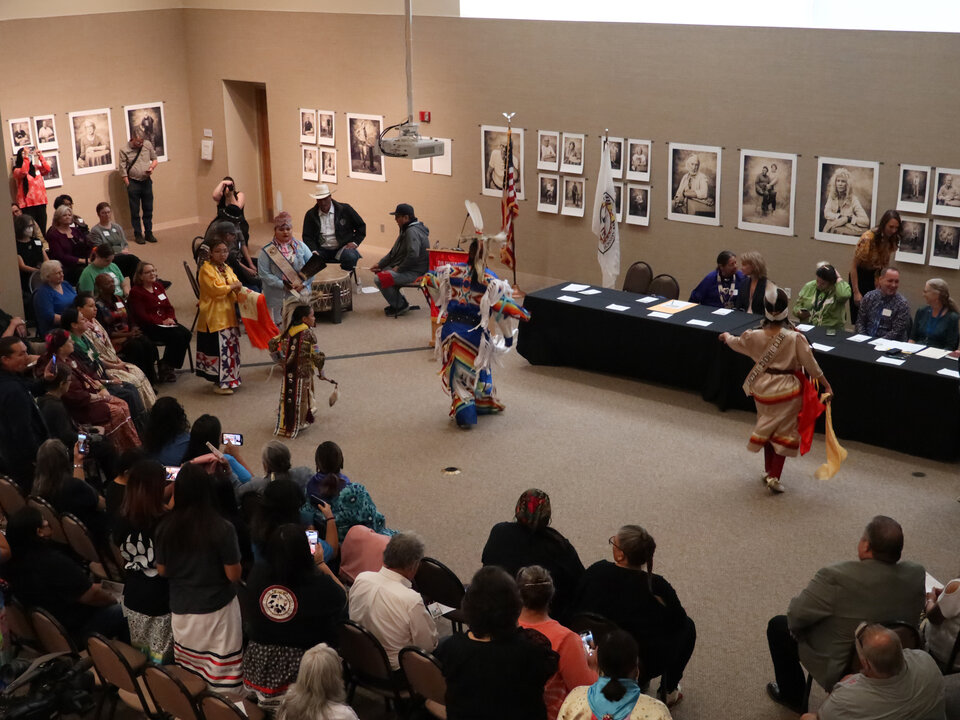
Recommendations:
- As a long-term goal, the Project should develop a curriculum to improve public-school education about the Otoe-Missouria and other Indigenous peoples in southeast Nebraska
- Since most residents learn primarily about Indigenous peoples in museums, the Project should increase its partnerships with Museums to provide updated information about and from the Otoe-Missouria.
- The Project should continue to celebrate Otoe-Missouria Day as an educational and cultural festival that helps residents in southeast Nebraska interact directly and build relationships with the Otoe-Missouria.
- Given the lack of awareness of the Otoe-Missouria as the primary tribe of southeast Nebraska, the Project should continue its focus on increasing the amount and quality of commemoration for the tribe in historical markers, interpretive signage, art, and other public recognition.
- Since so few southeast Nebraska residents regularly interact with Indigenous people, the Project should consider more educational events and cultural festivals in southeast Nebraska that bring together Native and non-Native populations.
